BLOG:
What is Body Composition and How Do You Measure it?
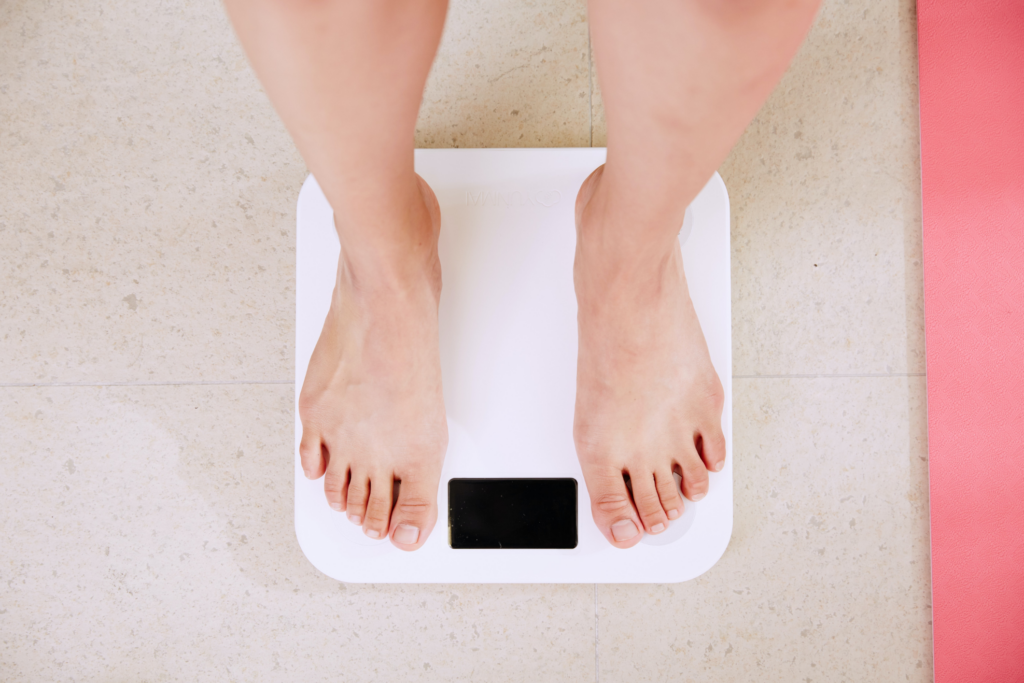
Are you in a love-hate relationship with your bathroom scales? As much as scales are a great tool for measuring your weight, they might not give you an accurate picture of your true health.
The scales can’t tell the difference between a kilo of muscle and a kilo of fat. In other words, your weight alone won’t tell you much about your body composition.
Knowing your body composition provides more detailed information about your health. Two people might weigh the same but have very different levels of health and fitness because of their body composition.
What is body composition?
Body composition is a term that refers to the two different types of mass that your body is made up of: body fat and fat-free mass.
Body fat is either located around your organs (visceral fat) or under your skin (subcutaneous fat). Some fat is absolutely vital for your health, and can help your body store fuel for energy, protect your internal organs, and regulate your hormones. Unfortunately, though, it’s quite common to be carrying more fat than what’s necessary for your body to function effectively.
Your fat-free mass refers to the rest of your weight that isn’t fat, including muscle, water, bone, tissues, and organs.
Why is body composition important?
Body composition is important because it tells you more about your overall health and fitness than weight alone. Your bathroom scales can’t tell the difference between how much of your weight comes from fat and how much from muscle. But body composition measurements can.
Your body composition can give you a better understanding of your current level of health and fitness. It can also serve as a measuring tool to monitor your progress when you start a new fitness program. It can also serve as an indicator to measure risk for potential health issues such as obesity, diabetes and heart disease.
If your fitness goals are to lose fat and gain lean body mass, measuring progress by weight can be misleading. This is because of body recomposition, where you build some muscle at the same time as burning fat. When this happens, your weight may stay the same despite feeling and seeing physical changes, which can be disheartening. Measuring body composition is a much better way to track these changes.
What’s the difference between body composition and BMI?
You might not have heard about body composition before, but you’ve probably heard about BMI (or Body Mass Index). BMI is a popular health-assessment method that compares your weight to your height.
Despite the widespread use of BMI in clinical practice, it has many limitations and isn’t the best tracking tool for overall health and fitness. Less fat and more muscle tend to point towards a better level of health; however, BMI doesn’t differentiate between the two.
Did you know that bodybuilders and other professional athletes often have BMIs that are considered overweight or even obese? This is because muscles are more dense and weigh more than fat, and BMI doesn’t take this into account.
How to measure body composition
There are several different ways to measure your body composition. However, you will need more than a bathroom scale and a calculator to find out your body fat and non-fat mass.
Here are the six best ways to measure your body composition:
1. Skin calipers
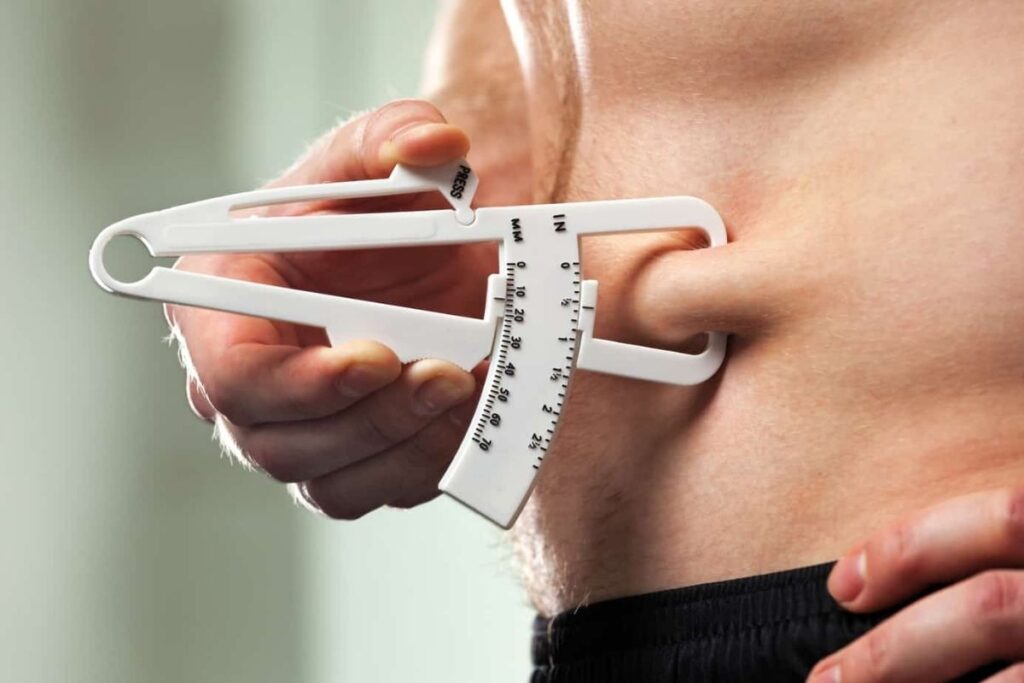
One of the original methods of measuring body fat is the skinfold test (AKA the pinch test). This method involves pinching the subcutaneous fat layer and measuring the thickness using a caliper, then estimating the total body fat percentage based on the subcutaneous fat.
This is a relatively convenient and inexpensive method of measurement; however, it does have its drawbacks. Firstly, although a large portion of body fat is subcutaneous, the measurement may not be accurate for people whose body fat distributions vary. On top of this, the results can either be accurate or highly inaccurate depending on the skills of the measurer.
2. Hydrostatic Weighing

Hydrostatic weighing (AKA underwater weighing) involves being fully submerged in a water tank and using water displacement to measure body composition. Since fat floats and muscle sinks, a person with more lean body mass weighs more underwater.
Underwater weighing is one of the most accurate methods of measuring body composition. However, it can be quite time consuming and it requires very special equipment that’s not widely available.
3. Air Displacement Plethysmography (Body Pod)
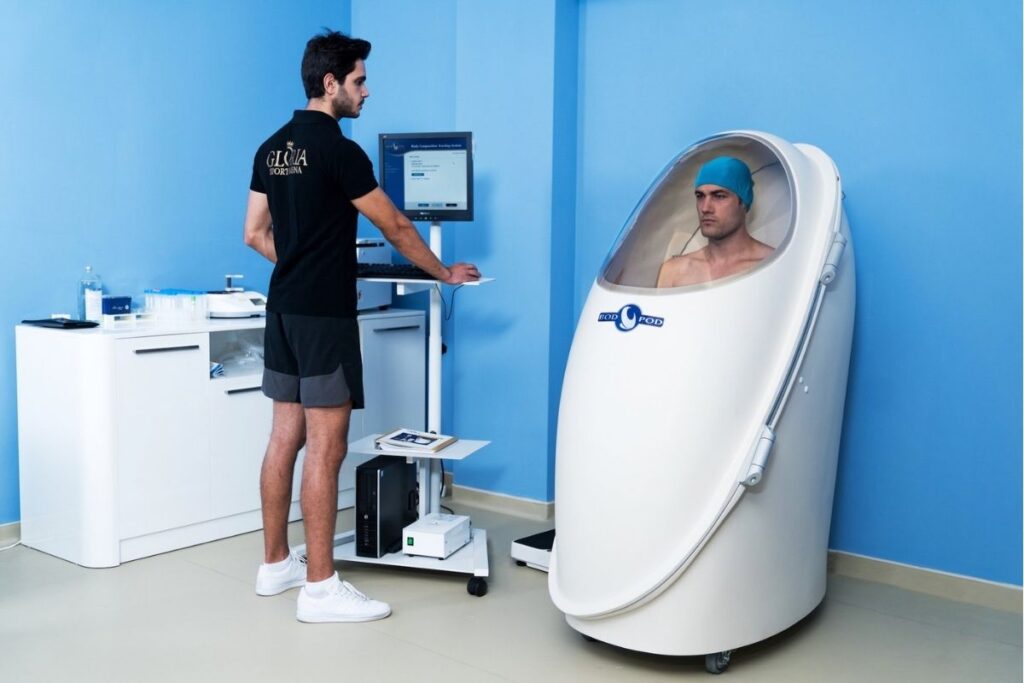
A body pod machine measures your body composition by measuring the volume of air your body displaces while sitting inside an egg-shaped chamber. First, weight and volume are used to calculate body density and then body fat percentage and the fat-free ratio.
This is considered a more convenient alternative to underwater weighing, as the time for measurement is relatively short at 3-5 minutes and you can continue to breathe in the chamber (where you can’t underwater). It also produces similar results to hydrostatic weighing.
4. Dual X-Ray Absorptiometry (DEXA) Scan
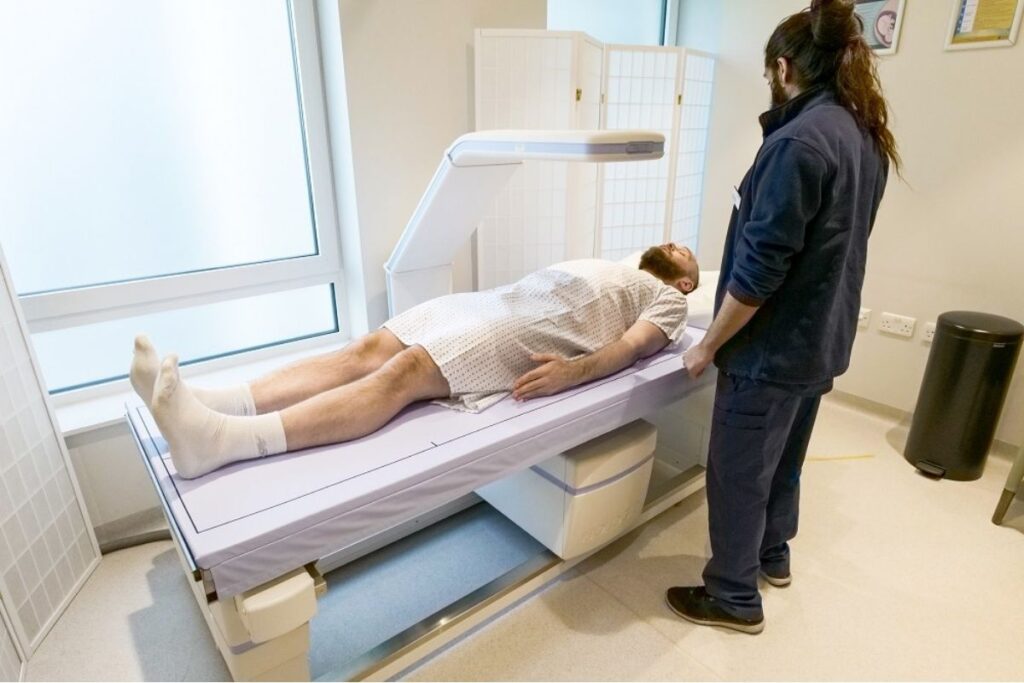
A DEXA scan uses low-level X-rays to measure bone, muscle and body fat. DEXA scans have become the gold standard in body composition measurement, also giving you an accurate measurement of your bone density.
DEXA scans set themselves apart from other methods because they differentiate between your visceral and subcutaneous fat, as well as lean mass, for a more accurate picture of your health. On the downside, DEXA scans can be quite expensive, and you’ll also need to book into a clinic that offers these scans.
5. Bioelectrical Impedance Analysis (BIA)
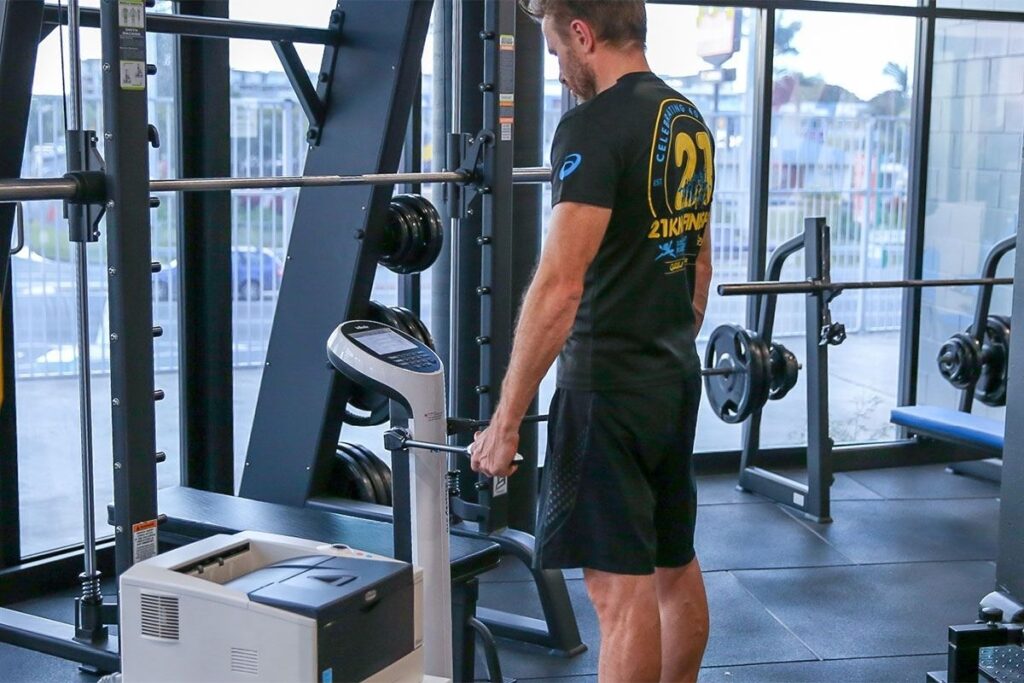
Bioelectrical impedance (BIA) is a non-invasive method which involves the placement of electrodes on your feet, hands, or both. A low-level electrical current is sent through your body, and the flow of the current is affected by the amount of water in your body.
BIA devices measure your body’s resistance in different types of tissue (muscles have a lower resistance to an electric current than fat.). As BIA determines the resistance to flow of the current as it passes through the body, it provides estimates of body water from which body fat is calculated using selected equations.
Although this is one of the cheapest methods of measuring body composition, the precision is poor, and relies heavily on the quality of the equipment used and your level of hydration at the time of measurement.
6. 3D Body Scan
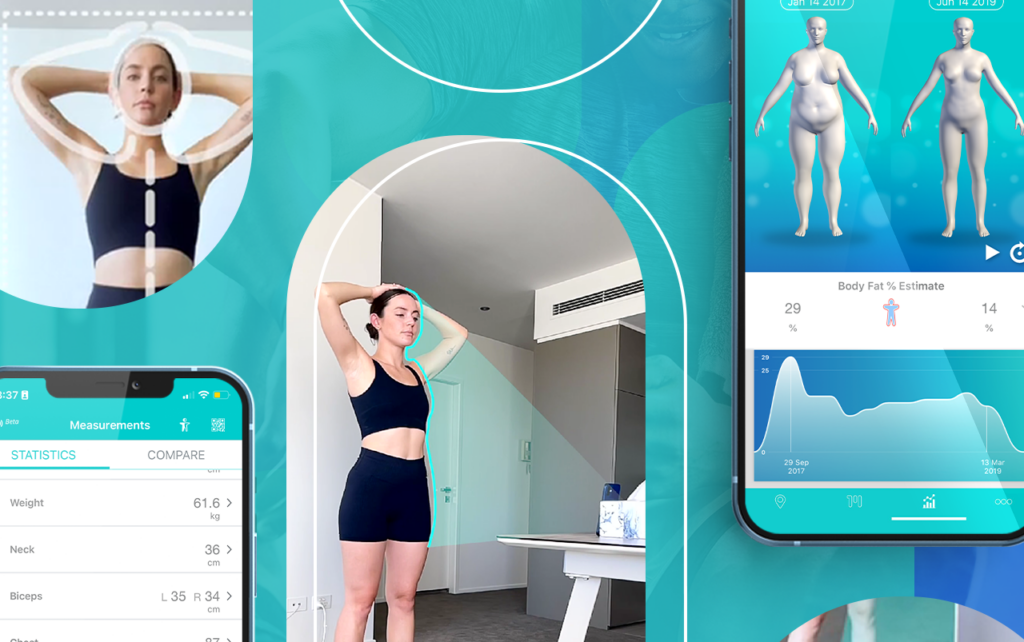
3D body scans use safe, non-invasive infrared depth sensors to generate a 3D model of your body. Body composition is then calculated using formulas based on your body’s volume.
This method also gives you accurate measurements of your body’s circumference and a 3D visualisation of your body, which can be helpful when tracking progress on a fitness or training program. For most body types, 3D mapping comes within two percent of the accuracy of the DEXA method. Because of the devices’ corresponding apps, you can also easily and frequently track your progress and find small changes you wouldn’t normally notice.
Bodymapp scans are an affordable, convenient and accessible option for 3D body scanning. The Bodymapp app allows you to complete a full 3D body scan anywhere, anytime just using your phone! Bodymapp utilises the depth sensors in compatible mobile models to capture thousands of data points to map the contours of your body and are accurate to within 1cm.
Bodymapp will capture your body measurements and create your unique 3D body avatar. Your avatar, body composition analysis and up to 20 measurements of your body can then be accessed in the app so you can track your body and your health on your phone!
Want to try it out for yourself? Download Bodymapp now!


